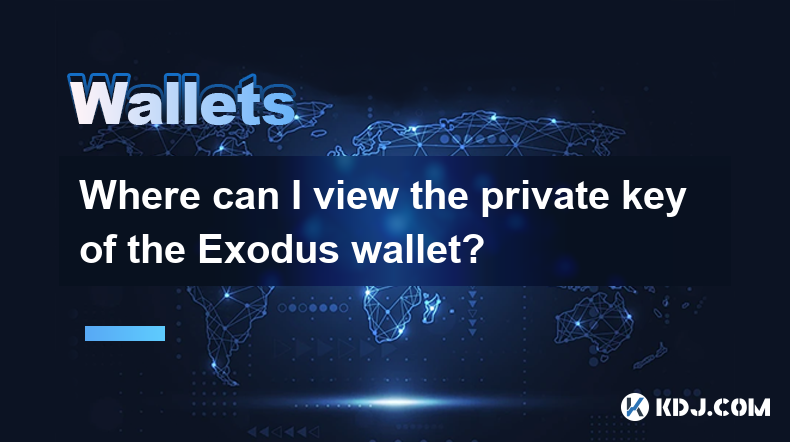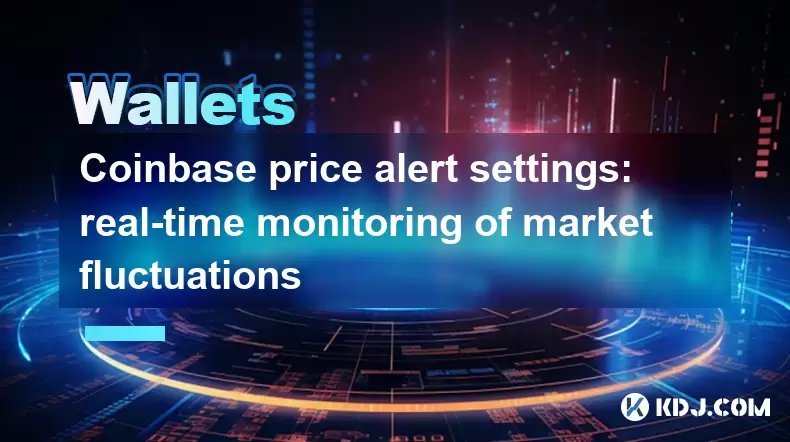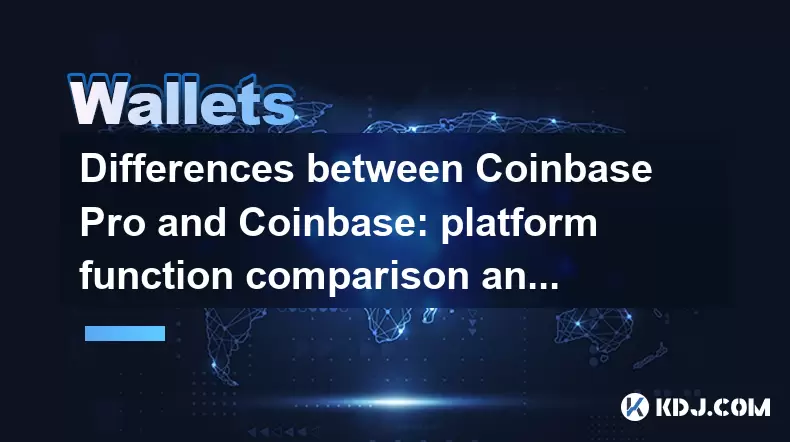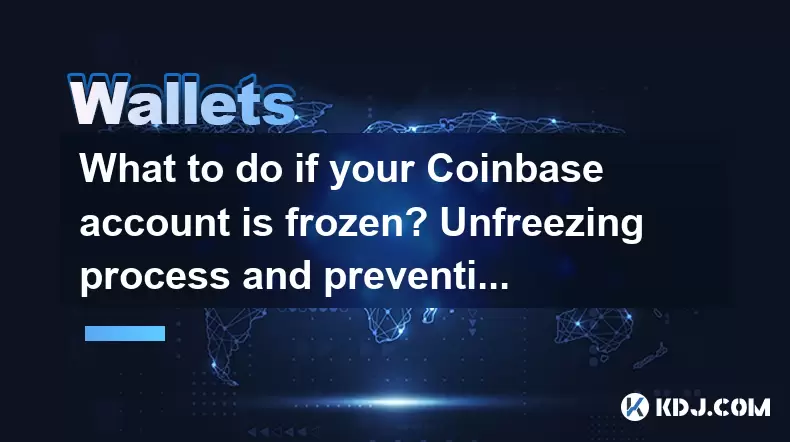-
 Bitcoin
Bitcoin $108,489.6704
1.13% -
 Ethereum
Ethereum $2,502.0528
2.92% -
 Tether USDt
Tether USDt $1.0002
0.00% -
 XRP
XRP $2.1941
0.51% -
 BNB
BNB $655.3375
1.00% -
 Solana
Solana $151.5977
1.27% -
 USDC
USDC $0.9999
0.00% -
 TRON
TRON $0.2768
0.32% -
 Dogecoin
Dogecoin $0.1676
2.86% -
 Cardano
Cardano $0.5675
0.98% -
 Hyperliquid
Hyperliquid $40.6109
7.48% -
 Bitcoin Cash
Bitcoin Cash $500.7746
2.09% -
 Sui
Sui $2.8328
2.03% -
 Chainlink
Chainlink $13.4452
1.26% -
 UNUS SED LEO
UNUS SED LEO $9.1623
0.39% -
 Avalanche
Avalanche $18.2267
2.24% -
 Stellar
Stellar $0.2382
0.00% -
 Toncoin
Toncoin $2.8885
1.68% -
 Shiba Inu
Shiba Inu $0.0...01159
0.91% -
 Litecoin
Litecoin $87.1827
0.88% -
 Hedera
Hedera $0.1511
2.90% -
 Monero
Monero $315.4992
-0.59% -
 Polkadot
Polkadot $3.4663
2.34% -
 Bitget Token
Bitget Token $4.6118
-0.65% -
 Dai
Dai $1.0000
-0.01% -
 Ethena USDe
Ethena USDe $1.0003
0.02% -
 Uniswap
Uniswap $7.2989
4.69% -
 Pepe
Pepe $0.0...01003
5.73% -
 Aave
Aave $275.5616
7.15% -
 Pi
Pi $0.5181
-2.49%
Where can I view the private key of the Exodus wallet?
Exodus wallet enhances security by not displaying private keys, using a 12-word recovery phrase instead, which can be converted to keys using trusted third-party tools offline.
Apr 04, 2025 at 12:14 am

When it comes to managing your cryptocurrencies, understanding how to access your private keys is crucial. The Exodus wallet, known for its user-friendly interface and robust security features, does not directly display private keys to its users. Instead, it uses a system designed to keep your assets secure while still allowing you to manage them effectively. In this article, we will explore the reasons behind this design choice, how you can still access your private keys if necessary, and the steps you need to take to ensure the safety of your digital assets.
Why Exodus Wallet Does Not Display Private Keys
The primary reason Exodus wallet does not show private keys directly is to enhance user security. By not displaying the private keys, Exodus reduces the risk of them being compromised through screenshots, shoulder surfing, or other forms of unauthorized access. Instead, Exodus uses a 12-word recovery phrase, which serves as a backup to restore your wallet on another device. This recovery phrase is essentially a human-readable version of your private keys, making it easier to manage and remember.
How to Access Your Private Keys in Exodus Wallet
While Exodus does not display private keys directly, you can still access them if needed. Here’s how you can do it:
- Backup Your Wallet: First, ensure you have backed up your wallet using the 12-word recovery phrase. This is crucial for accessing your private keys later.
- Use a Third-Party Tool: You will need to use a third-party tool like a Bitcoin or Ethereum private key generator. These tools can convert your recovery phrase into private keys.
- Enter Your Recovery Phrase: Input your 12-word recovery phrase into the tool. Make sure you are using a trusted and secure tool to avoid phishing attempts.
- Generate Private Keys: The tool will then generate the private keys associated with your wallet addresses.
Remember, handling private keys directly increases the risk of losing your funds if not done carefully.
Security Measures When Handling Private Keys
Handling private keys requires utmost caution. Here are some security measures you should follow:
- Use Offline Tools: Always use offline tools to generate and handle private keys to minimize the risk of online attacks.
- Secure Environment: Ensure you are in a secure, private environment when dealing with your recovery phrase or private keys.
- Avoid Digital Storage: Never store your recovery phrase or private keys digitally. Write them down on paper and store them in a safe place.
- Limit Access: Only access your private keys when absolutely necessary. The less you handle them, the lower the risk of exposure.
Importance of the 12-Word Recovery Phrase
The 12-word recovery phrase is a critical component of the Exodus wallet. It serves as a backup mechanism that allows you to restore your wallet on any device. Here’s why it’s important:
- Accessibility: The recovery phrase is easier to remember and manage than a long string of characters that make up a private key.
- Security: By not displaying private keys, Exodus reduces the risk of them being stolen or compromised.
- Restoration: If you lose access to your wallet, the recovery phrase can help you regain control of your funds.
Always keep your recovery phrase in a safe and secure location, and never share it with anyone.
Steps to Backup Your Exodus Wallet
Backing up your Exodus wallet is essential for accessing your private keys later. Here are the steps to do it:
- Open Exodus Wallet: Launch the Exodus application on your device.
- Navigate to Backup: Click on the settings icon, then select "Backup Wallet."
- Enter Your Password: You will be prompted to enter your wallet password to proceed.
- Record the Recovery Phrase: A 12-word recovery phrase will be displayed. Write it down on paper and store it securely.
- Confirm the Phrase: You will be asked to confirm the recovery phrase to ensure you have recorded it correctly.
By following these steps, you ensure that you can access your funds even if you lose your device.
Using Third-Party Tools to Access Private Keys
When you need to access your private keys, using a third-party tool is necessary. Here’s how to do it safely:
- Choose a Trusted Tool: Select a reputable tool like Ian Coleman’s BIP39 tool or similar. Ensure it is downloaded from a trusted source.
- Offline Use: Use the tool on an offline computer to avoid potential online threats.
- Input Recovery Phrase: Carefully enter your 12-word recovery phrase into the tool.
- Generate Private Keys: The tool will generate the private keys associated with your wallet addresses.
Always double-check the tool’s authenticity and use it in a secure environment to protect your funds.
Common Mistakes to Avoid When Handling Private Keys
Handling private keys can be risky if not done correctly. Here are some common mistakes to avoid:
- Storing Keys Digitally: Never store your private keys or recovery phrase on digital devices, as they can be hacked.
- Sharing Keys: Do not share your private keys or recovery phrase with anyone, as this can lead to theft.
- Using Insecure Tools: Avoid using untrusted or online tools to generate or handle your private keys.
- Neglecting Backups: Failing to back up your wallet properly can result in losing access to your funds.
By avoiding these mistakes, you can better protect your cryptocurrency assets.
Best Practices for Managing Your Exodus Wallet
To ensure the security and accessibility of your Exodus wallet, follow these best practices:
- Regular Backups: Regularly back up your wallet using the 12-word recovery phrase.
- Secure Storage: Store your recovery phrase in a secure, physical location, such as a safe or a locked drawer.
- Password Protection: Use a strong, unique password for your Exodus wallet and change it periodically.
- Monitor Transactions: Keep an eye on your wallet’s transaction history to detect any unauthorized activity quickly.
By adhering to these practices, you can maintain control over your digital assets and minimize the risk of losing them.
Understanding the Role of Private Keys in Cryptocurrency
Private keys are fundamental to the security of cryptocurrencies. They are used to sign transactions and prove ownership of the funds in a wallet. Here’s why they are so important:
- Transaction Authorization: Only the holder of the private key can authorize transactions from the associated wallet address.
- Proof of Ownership: The private key serves as proof that you own the funds in your wallet.
- Security: Keeping your private keys secure is essential to prevent unauthorized access to your funds.
Understanding the role of private keys helps you appreciate the importance of managing them carefully.
How to Restore Your Exodus Wallet Using the Recovery Phrase
If you need to restore your Exodus wallet, follow these steps:
- Download Exodus: Install the Exodus wallet on your new device.
- Select Restore Wallet: During the setup process, choose the option to restore your wallet.
- Enter Recovery Phrase: Carefully enter your 12-word recovery phrase in the correct order.
- Set a New Password: Set a new password for your restored wallet.
By following these steps, you can regain access to your funds using the recovery phrase.
Additional Security Features of Exodus Wallet
Exodus wallet offers several additional security features to protect your assets:
- Two-Factor Authentication (2FA): Enable 2FA to add an extra layer of security to your wallet.
- Hardware Wallet Integration: Exodus supports integration with hardware wallets like Trezor and Ledger, providing an additional layer of security.
- Encrypted Storage: All data in the Exodus wallet is encrypted, ensuring that your information remains secure.
These features work together to enhance the overall security of your cryptocurrency holdings.
Common Questions About Exodus Wallet and Private Keys
Q: Why doesn’t Exodus wallet show private keys directly?
A: Exodus wallet does not display private keys directly to enhance user security. By using a 12-word recovery phrase instead, it reduces the risk of private keys being compromised through screenshots or other unauthorized access methods.
Q: How can I access my private keys in Exodus wallet?
A: To access your private keys, you need to back up your wallet using the 12-word recovery phrase and then use a trusted third-party tool to convert the recovery phrase into private keys. Always do this in a secure, offline environment.
Q: What should I do if I lose my recovery phrase?
A: If you lose your recovery phrase, you will lose access to your funds permanently. It’s crucial to store your recovery phrase in a safe and secure location and never share it with anyone.
Q: Can I use my recovery phrase on any device to restore my wallet?
A: Yes, you can use your 12-word recovery phrase to restore your Exodus wallet on any device that supports the Exodus application.
Q: Is it safe to use third-party tools to generate private keys?
A: Using third-party tools can be safe if you choose reputable, trusted tools and use them in an offline environment. Always ensure the tool is downloaded from a trusted source to avoid phishing attempts.
Q: What are the risks of handling private keys directly?
A: Handling private keys directly increases the risk of them being stolen or lost. If someone gains access to your private keys, they can steal your funds. It’s important to handle them with extreme caution and only when necessary.
Q: How often should I back up my Exodus wallet?
A: It’s a good practice to back up your Exodus wallet whenever you add new assets or make significant changes to your wallet. Regular backups ensure you can always recover your funds if needed.
Q: Can I use a hardware wallet with Exodus for added security?
A: Yes, Exodus supports integration with hardware wallets like Trezor and Ledger, which can provide an additional layer of security for your cryptocurrency holdings.
Q: What should I do if I suspect my wallet has been compromised?
A: If you suspect your wallet has been compromised, immediately transfer your funds to a new, secure wallet. Change all related passwords and review your transaction history for any unauthorized activity.
Q: How can I ensure the security of my Exodus wallet?
A: To ensure the security of your Exodus wallet, regularly back up your wallet, use strong and unique passwords, enable two-factor authentication, and consider using a hardware wallet for added security. Always handle your recovery phrase and private keys with caution.
Disclaimer:info@kdj.com
The information provided is not trading advice. kdj.com does not assume any responsibility for any investments made based on the information provided in this article. Cryptocurrencies are highly volatile and it is highly recommended that you invest with caution after thorough research!
If you believe that the content used on this website infringes your copyright, please contact us immediately (info@kdj.com) and we will delete it promptly.
- Blockchain, Apple Stock, and UAE Investors: A New York Minute on Digital Finance
- 2025-06-30 10:30:11
- SEC, Grayscale, and Bitcoin ETFs: A New York Minute on Crypto's Next Big Thing
- 2025-06-30 10:30:11
- Bitcoin, Corporate Restructuring, and Institutional Investors: A New Era?
- 2025-06-30 10:50:12
- Cardano, Hoskinson, and Bitcoin DeFi: A New Narrative?
- 2025-06-30 11:10:14
- Ondo Finance and the Tokenized Revolution: Are Blockchain Stocks the Future?
- 2025-06-30 11:10:14
- Bitcoin, Dogecoin, XRP: Decoding the Crypto Crossroads
- 2025-06-30 11:30:11
Related knowledge

Coinbase price alert settings: real-time monitoring of market fluctuations
Jun 29,2025 at 07:00am
Setting Up Coinbase Price AlertsTo begin real-time monitoring of market fluctuations on Coinbase, users can utilize the built-in price alert feature. This function allows you to receive notifications when a cryptocurrency reaches a specific price point. To access this setting, open the Coinbase app or log in via the web platform. Navigate to the 'Prices...

How to stake cryptocurrencies on Coinbase? Benefits and risks
Jun 27,2025 at 06:36pm
Understanding Cryptocurrency Staking on CoinbaseStaking cryptocurrencies involves locking up digital assets to support the operations of a blockchain network, typically in return for rewards. Coinbase, one of the most popular cryptocurrency exchanges globally, offers staking services for several proof-of-stake (PoS) coins. Users can stake their holdings...

Differences between Coinbase Pro and Coinbase: platform function comparison and analysis
Jun 29,2025 at 08:21am
Overview of Coinbase and Coinbase ProWhen exploring the cryptocurrency trading landscape, users often encounter two platforms under the same parent company: Coinbase and Coinbase Pro. While both are operated by the same organization, they cater to different types of users and offer varying features. Coinbase is primarily designed for beginners and casua...

What to do if your Coinbase account is frozen? Unfreezing process and preventive measures
Jun 30,2025 at 03:49am
Understanding Why Your Coinbase Account Might Be FrozenIf your Coinbase account is frozen, it typically indicates that the platform has detected suspicious activity or potential violations of its terms of service. This could be due to a variety of reasons such as unusual login attempts, high-risk transactions, or incomplete verification steps. Coinbase ...

How to contact Coinbase customer service? Support channels and response times
Jun 28,2025 at 01:29pm
Contacting Coinbase Customer Service: Support Channels and Response TimesIf you're a user of Coinbase, reaching their customer service team may become necessary for various reasons, such as account verification issues, transaction disputes, or technical difficulties. Understanding the different support channels available and what to expect in terms of r...

Coinbase advanced trading function usage tutorial: limit orders and market orders
Jun 28,2025 at 09:07pm
Understanding the Difference Between Limit Orders and Market OrdersWhen using Coinbase's advanced trading features, it is crucial to understand the fundamental difference between limit orders and market orders. A market order executes immediately at the best available price on the market. This type of order ensures that your trade goes through quickly, ...

Coinbase price alert settings: real-time monitoring of market fluctuations
Jun 29,2025 at 07:00am
Setting Up Coinbase Price AlertsTo begin real-time monitoring of market fluctuations on Coinbase, users can utilize the built-in price alert feature. This function allows you to receive notifications when a cryptocurrency reaches a specific price point. To access this setting, open the Coinbase app or log in via the web platform. Navigate to the 'Prices...

How to stake cryptocurrencies on Coinbase? Benefits and risks
Jun 27,2025 at 06:36pm
Understanding Cryptocurrency Staking on CoinbaseStaking cryptocurrencies involves locking up digital assets to support the operations of a blockchain network, typically in return for rewards. Coinbase, one of the most popular cryptocurrency exchanges globally, offers staking services for several proof-of-stake (PoS) coins. Users can stake their holdings...

Differences between Coinbase Pro and Coinbase: platform function comparison and analysis
Jun 29,2025 at 08:21am
Overview of Coinbase and Coinbase ProWhen exploring the cryptocurrency trading landscape, users often encounter two platforms under the same parent company: Coinbase and Coinbase Pro. While both are operated by the same organization, they cater to different types of users and offer varying features. Coinbase is primarily designed for beginners and casua...

What to do if your Coinbase account is frozen? Unfreezing process and preventive measures
Jun 30,2025 at 03:49am
Understanding Why Your Coinbase Account Might Be FrozenIf your Coinbase account is frozen, it typically indicates that the platform has detected suspicious activity or potential violations of its terms of service. This could be due to a variety of reasons such as unusual login attempts, high-risk transactions, or incomplete verification steps. Coinbase ...

How to contact Coinbase customer service? Support channels and response times
Jun 28,2025 at 01:29pm
Contacting Coinbase Customer Service: Support Channels and Response TimesIf you're a user of Coinbase, reaching their customer service team may become necessary for various reasons, such as account verification issues, transaction disputes, or technical difficulties. Understanding the different support channels available and what to expect in terms of r...

Coinbase advanced trading function usage tutorial: limit orders and market orders
Jun 28,2025 at 09:07pm
Understanding the Difference Between Limit Orders and Market OrdersWhen using Coinbase's advanced trading features, it is crucial to understand the fundamental difference between limit orders and market orders. A market order executes immediately at the best available price on the market. This type of order ensures that your trade goes through quickly, ...
See all articles

























































































